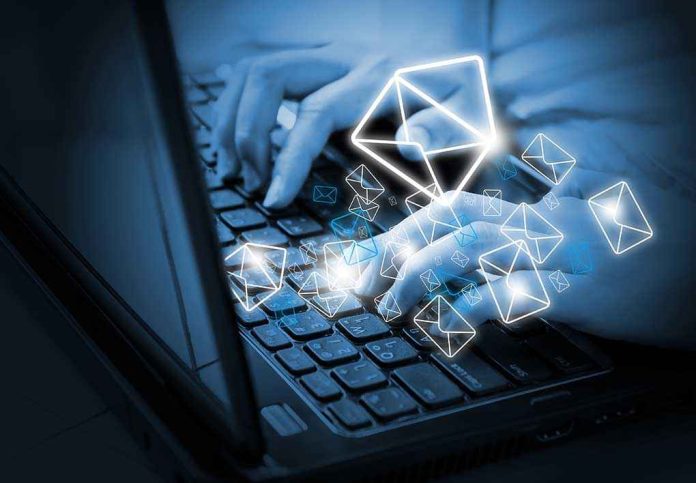
Scammers are now using email to strike up actual conversations with Americans, turning once-laughable phishing attempts into sophisticated, targeted attacks that are costing victims dearly—and yes, they’re getting more creative by the day.
At a Glance
- Phishing scams have evolved from generic mass emails into highly personalized, ongoing conversations targeting individuals and businesses.
- Attackers now hijack genuine email threads, impersonate trusted contacts, and use psychological manipulation to build trust and extract sensitive information.
- AI and easy-to-use phishing kits are fueling an explosion in conversational email scams, making detection harder than ever.
- Experts warn that no one is safe: everyone from retirees to CEOs is a target as scammers exploit weaknesses in digital communication and human nature.
Email Scams Aren’t Just for the Gullible—They’re Targeting Everyone Now
If you think you’re too smart to fall for a phishing email, think again. The con artists behind these scams aren’t sending out those poorly written “Nigerian prince” emails anymore. No, they’ve gotten wise—and they’re using actual conversation, psychology, and even details from your real-life contacts to worm their way into your trust. It’s not just about blasting spam anymore. Scammers are picking their targets, starting up email conversations, and patiently stringing victims along with personalized messages until they get what they want: your personal info, your passwords, your money, or access to your business systems.
This new breed of scammer leverages everything from breached data to AI-generated content to make their attacks convincing. They’ll hijack an ongoing email thread—maybe with your boss or a family member—and slip in a malicious message that looks exactly like the real thing. They use fake invoices, urgent requests, or “account security alerts” that prey on your emotions and sense of urgency. And when you respond, you’re not met with a robotic auto-reply. Instead, you’re drawn into an actual back-and-forth conversation, where the scammer builds rapport and inches closer to their endgame.
The Evolution: From AOL Shams to High-Tech Social Engineering
Back in the 1990s, the digital Wild West was a playground for hackers. The first phishing schemes were crude, using AOL’s chatrooms and emails to trick users into handing over their passwords. By the 2000s, mass-produced spam and “prince-in-exile” scams flooded inboxes worldwide, targeting the naive and the greedy alike. But as Americans got wise, so did the scammers. By the 2010s, we saw spear phishing—custom attacks aimed at specific people, often using data scraped from social media or hacked accounts. Now, we’ve entered the era of “conversational phishing.” These criminals are patient, technically savvy, and relentless. They’ll insert themselves into ongoing business deals, impersonate actual co-workers, and even leverage AI to mimic writing styles. The result: attacks that look and feel legitimate, slipping past spam filters and even seasoned professionals.
Phishing kits, sold on the dark web, are making it easier than ever for anyone with a grudge or greed in their heart to launch attacks. These toolkits automate much of the grunt work and provide templates for everything from fake login pages to AI-powered chatbots. The shift to remote work and dependence on digital communication—thanks, in no small part, to years of lockdowns and government mandates—has only increased the number of potential victims.
Why It’s Getting Worse, Not Better
Cybersecurity experts are ringing alarm bells. They warn that email remains the number one vector for these attacks, and the bad guys are becoming more cunning by the day. AI-driven phishing is a game-changer, letting scammers craft emails tailored to your interests, habits, and even your writing style. The proliferation of phishing kits means the barrier to entry is lower than ever, flooding the internet with would-be con artists. No more obvious typos or outlandish promises—now it’s a trusted co-worker “following up” on an invoice, a fake boss asking for sensitive files, or a “Meta Security Team” alert about your Instagram account. The goal? To get you talking, get you comfortable, and then get you to hand over the keys to your digital kingdom.
Organizations are scrambling to defend themselves. They’re investing in advanced email security, training employees, and rolling out multi-factor authentication. But it’s a perpetual arms race. Every time defenders find a new solution, scammers find a new exploit. And let’s be honest: the government’s endless bureaucracy and fondness for “task forces” haven’t exactly solved the problem. If anything, the explosion of digital regulation has just given cybercriminals new cracks to slip through—while leaving hardworking Americans to pick up the pieces after a breach.
Who’s Getting Burned—and What Can You Do?
The victims aren’t just careless or clueless. Doctors, lawyers, small-business owners, retirees, and even IT professionals have been hoodwinked by these scams. High-profile business email compromises have cost billions, and the emotional toll on individuals is incalculable. The damage isn’t just financial—these attacks erode trust in digital communication, disrupt families, and can even destroy careers. Scammers have global reach and operate with near-impunity, often from countries where law enforcement cooperation is laughable at best.
So what’s the answer? Experts say awareness is key. If an email feels off, pause before you click. Verify with a phone call or face-to-face chat if possible. Use strong, unique passwords and enable multi-factor authentication. And don’t trust any email—no matter how convincing—if it asks for sensitive information or urges “urgent” action. Americans can’t afford to let their guard down, especially as technology keeps making these scams harder to spot and easier to execute. The best defense is skepticism, vigilance, and refusing to play along with the con.
Sources:
phishing.org: History of Phishing
Verizon: The History of Phishing Attacks
Microsoft: A History of Email Hoaxes
dmarcreport.com: Tracing the History of Phishing Attacks
Cofense: The History of Phishing Attacks





